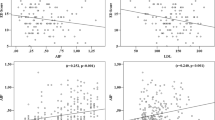Abstract
Atherosclerosis is a general health problem that not only affects the coronary arteries but also (in men) the penile arteries, thus contributing to organic causes of erectile dysfunction (ED) in heart disease patients. These organic causes are intertwined with psychological and pharmacological causes because medication prescribed for heart disease patients may also cause ED. The incidence of ED after myocardial infarction ranges from 38 to 78%. As sexual intercourse involves physical exertion, the medical history, ventricular function determined through echocardiography, and stress testing are used to classify patients into various groups where coital activity represents a greater or lesser cardiovascular risk. The energy requirements for intercourse are not high, ranging from 3.7 metabolic equivalents (METs) of energy expenditure at resting state during the preorgasmic phase to 5 METs during orgasm. The Bruce protocol for exercise stress testing is a six-stage protocol with changes in the slope and speed of the treadmill. As a general rule, a patient who completes the first two stages of the Bruce protocol has a functional capacity greater than 7 METs, which is considered sufficient for sexual intercourse. The physician or cardiologist concerned should institute first-line treatment with oral drugs according to the indications listed below. If sexual activity is not contraindicated, the treatment of choice for ED in heart disease patients is oral therapy with sildenafil, except in those cases in which its use is contraindicated. Specific recommendations are discussed.
This is a preview of subscription content, access via your institution
Access options
Subscribe to this journal
Receive 8 print issues and online access
$259.00 per year
only $32.38 per issue
Buy this article
- Purchase on Springer Link
- Instant access to full article PDF
Prices may be subject to local taxes which are calculated during checkout
Similar content being viewed by others
References
Maroto Montero J, Pablo Zarzosa C . La sexualidad en el Cardiopata. Clin Cardiovasc 1999; 17: 1–17.
Keene LC, Davies PH . Drug-related erectile dysfunction. Adverse Drug React Toxicol Rev 1999; 18: 5–24.
DeBusk R et al. Management of sexual dysfunction in patients with cardiovascular disease: recommendations of the Princeton consensus panel. Am J Cardiol 2000; 86: 175–181.
McArdle W, Katch F, Katch V . Enviromental factors and exercise. In: McArdle W, Katch F, Katch V (eds). Essentials of Exercise Physiology. Lea and Febiger: Philadelphia, 1994, pp 423–448.
Horwitz LD . Alcohol and heart disease. JAMA 1975; 232: 959–960.
Stein RA . Cardiovascular response to sexual activity. Am J Cardiol 2000; 86: 27F–29F.
Ueno M . The so-called coition death. Jpn J Leg Med 1963; 17: 330–340.
Taylor Jr HA . Sexual activity and the cardiovascular patient: guidelines. Am J Cardiol 1999; 84: 6N–10N.
Hunt SA et al. ACC/AHA Guidelines for the evaluation and management of chronic heart failure in the adult: executive summary. A Report of the American College of Cardiology/American Heart Association Task Force on Practice Guidelines (Committee to Revise the 1995 Guidelines for the Evaluation and Management of Heart Failure): developed in collaboration with the International Society for Heart and Lung Transplantation; endorsed by the Heart Failure Society of America. Circulation 2001; 104: 2996–3007.
Herrmann HC, Chang G, Klugherz BD, Mahoney PD . Hemodynamic effects of sildenafil in men with severe coronary artery disease. N Engl J Med 2000; 342: 1622–1626.
Shakir SAW et al. Cardiovascular events in users of sildenafil: results from first phase of prescription event monitoring in England. BMJ 2001; 322: 651–652.
Conti CR, Pepine CJ, Sweeney M . Efficacy and safety of sildenafil citrate in the treatment of erectile dysfunction in patients with ischemic heart disease. Am J Cardiol 1999; 83: 29C–34C.
Kloner RA, Brown M, Prisant LM, Collins M . Effect of sildenafil in patients with erectile dysfunction taking antihypertensive therapy. Am J Hypertens 2001; 14: 70–73.
Mittleman MA, Glasser DB, Orazem J . Clinical trials of sildenafil citrate (Viagra) demonstrate no increase in risk of myocardial infarction and cardiovascular death compared with placebo. Int J Clin Pract 2003; 57: 597–600.
Halcox JPJ et al. The effect of sildenafil on human vascular function, platelet activation, and myocardial ischemia. J Am Coll Cardiol 2002; 40: 1232–1240.
Kloner RA, Zusman RM . Cardiovascular effects of sildenafil citrate and recommendations for its use. Am J Cardiol 1999; 84: 11N–17N.
Author information
Authors and Affiliations
Corresponding author
Rights and permissions
About this article
Cite this article
Sainz, I., Amaya, J. & Garcia, M. Erectile dysfunction in heart disease patients. Int J Impot Res 16 (Suppl 2), S13–S17 (2004). https://doi.org/10.1038/sj.ijir.3901238
Published:
Issue Date:
DOI: https://doi.org/10.1038/sj.ijir.3901238
Keywords
This article is cited by
-
Potential differentiation of human mesenchymal stem cell transplanted in rat corpus cavernosum toward endothelial or smooth muscle cells
International Journal of Impotence Research (2007)



